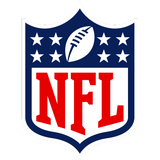
Focus on player safety aims at youth
Chris Nowinski said the public doesn’t need to worry as much about current NFL players when it comes to the prevention and treatment of concussions.
The co-founder of the Sports Legacy Institute told those gathered at the annual Youth Sports Safety Summit that it’s the younger players — and not just those playing contact sports like football and hockey — who should get the focus.
“We have to face the reality that youth athletes are nowhere near as well protected as the pros,” Nowinski told FOXSports.com. “I feel there are simple changes that need to be put in place. It’s going to take organizations like mine and the alliance to step up and speak for these kids.”
Along with burgeoning research on the life-changing effects of repeated head trauma by organizations that study the issue like his, Nowinski said the thousands of lawsuits filed by former NFL players has spurred the league to increase its safety measures in recent years. Those guidelines range from more stringent rules on hits to the head to the planned addition of neurosurgeons to the sidelines announced by NFL commissioner Roger Goodell in New Orleans last week.
While some of those changes are costly, Nowinski detailed a few free alterations that the NFL has implemented: limits on hitting outside of games and the elimination of two-a-day practices. The NFL Players Association collectively bargained for those modifications.
“No one is speaking up for the youth player and that’s something we’re trying to do,” Nowinski said.
This summit was designed to draw attention to not only concussions and traumatic brain injuries among youth athletes, but also heat illness and sudden cardiac deaths — the latter of which is the leading cause of death among young athletes. National Athletic Trainers’ Association (NATA), the leaders of the summit, are using the meeting to finalize a national action plan, one they will take to lawmakers on Capitol Hill on Wednesday.
A major prong of the plan is pushing for more certified athletic trainers. Only 42 percent of high school athletes currently have access to one, according to one study.
“You wouldn’t put football players on the field if you couldn’t afford helmets,” said Dawn Comstock, an epidemiology professor at the University of Colorado. “Why are you putting a football team on the field if you can’t afford a certified athletic trainer?”
The NFL put athletic trainers inside press boxes of every game to monitor players suspected of head injury starting in the 2011 season. While such monitoring isn’t always feasible at other levels, speakers promoted more awareness from the young athletes themselves as well as coaches and parents
An estimated 2.65 million children are treated annually for concussions related to sports, according to a Centers for Disease Control and Prevention study. Beth Mallon, a co-founder of Advocates for Injured Athletes and a speaker on Tuesday, said there is reason to believe that a high percentage of concussions are also never diagnosed.
“It’s the culture of sports,” Mallon told FOXSports.com after her speech. “Athletes tend not to speak up. They don’t want to come out of the game. You do need to speak up. You do need to rest your brain. The (parents’) role is equally important. Having them understand the issue and learn that it can be life-threatening if they let their child go back in the game too soon.”
Concussions are hardly a football-only issue. Concussion rates in soccer in basketball have also been on the rise. In soccer, girls have concussion rate that is 68 percent higher than their male peers.
It’s a subject that former US Women's National Team member Cindy Parlow Cone knows well. She was forced to retire in 2006 due to post-concussion syndrome.
“Part of the problem is that we need to educate head coaches, players and their parents about concussion dangers. They are different in every sport,” said Parlow Cone, a spokesperson for the King-Devick Test developed to diagnose concussions. "They are doing a lot of research into what is age-appropriate to start heading the ball. Like football examining its hits count, researchers are also looking into how many times it’s safe to head a ball in a week.”
One thing the last speaker of the day said hopes won’t happen is that parents keep their kids away from sports, including football.
Kevin Guskiewicz, professor at the University of North Carolina and member of the NFL’s head, neck and spine committee, took aim at President Obama’s comments to The New Republic published last week where Obama said if he had a son he would “have to think long and hard before I let him play football.”
“Are we pushing kids away from sports?” said Guskiewicz, who currently has two kids playing football. “Are we creating a society of obese kids?”









